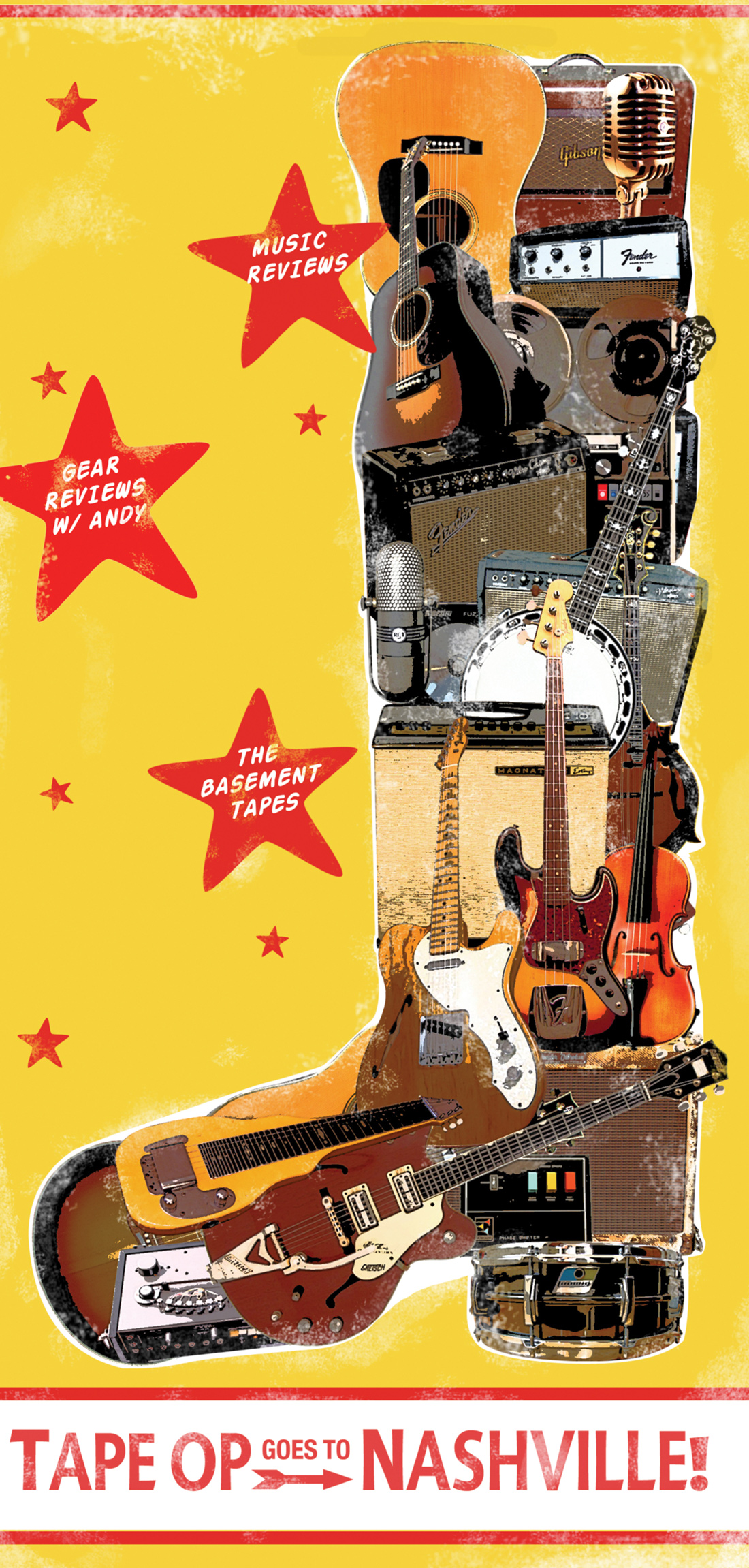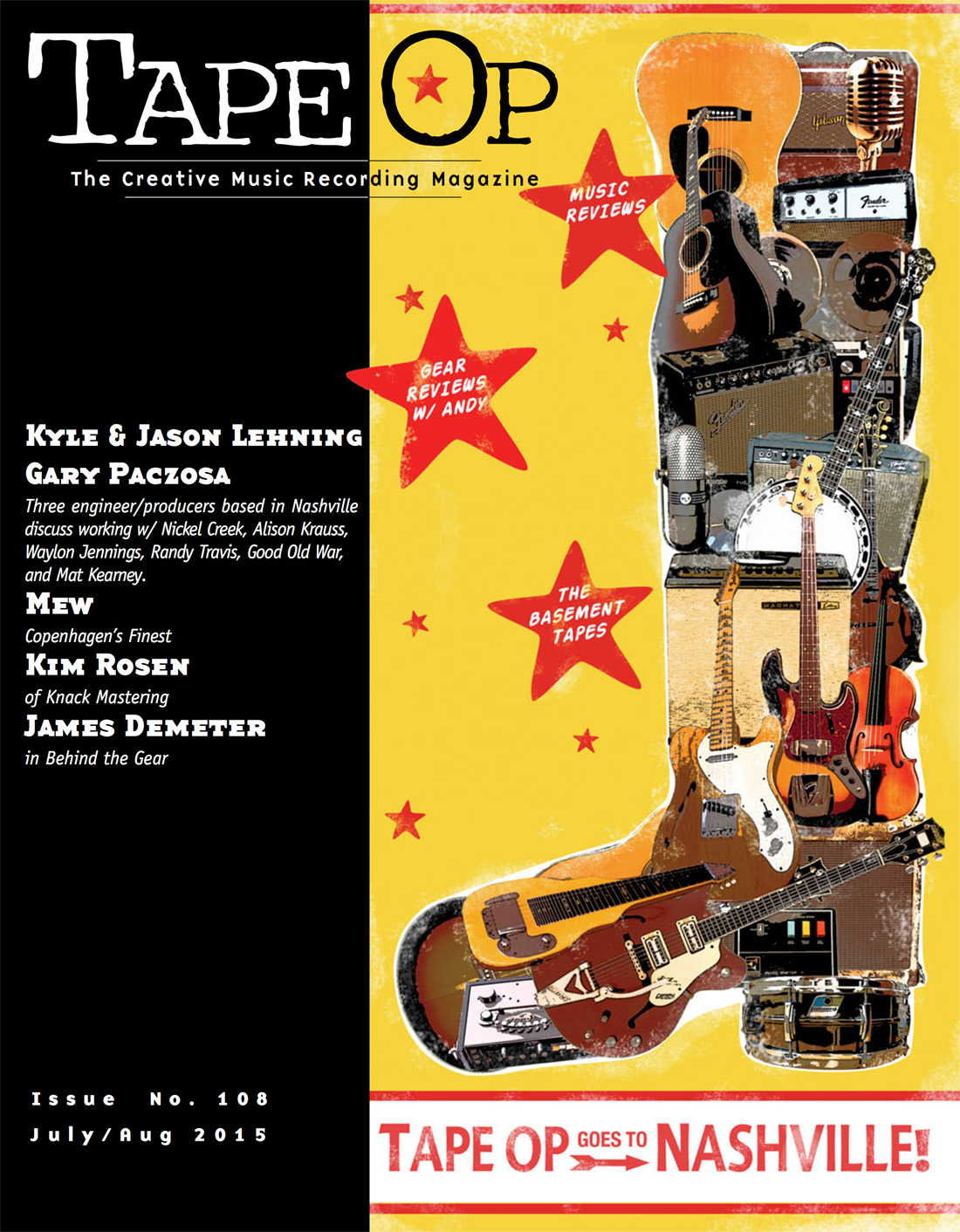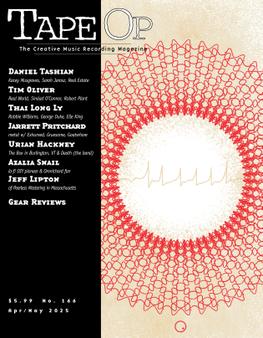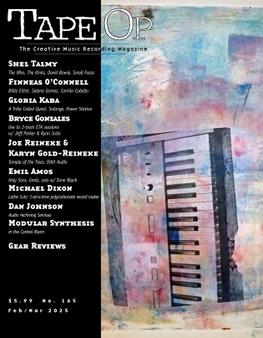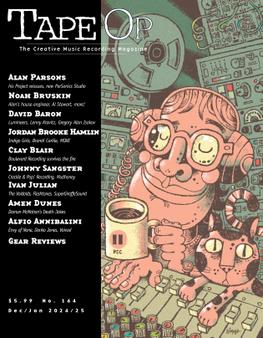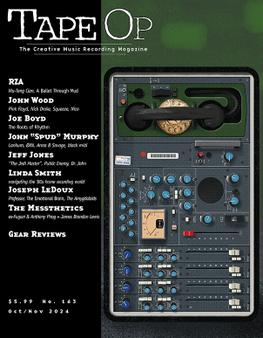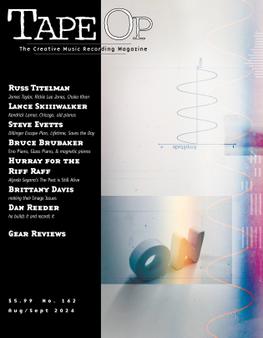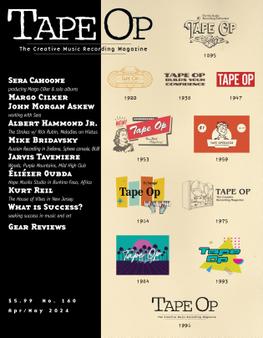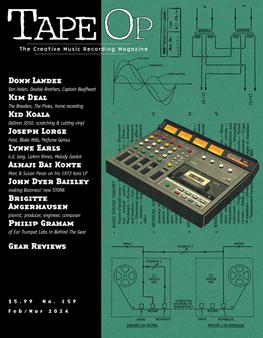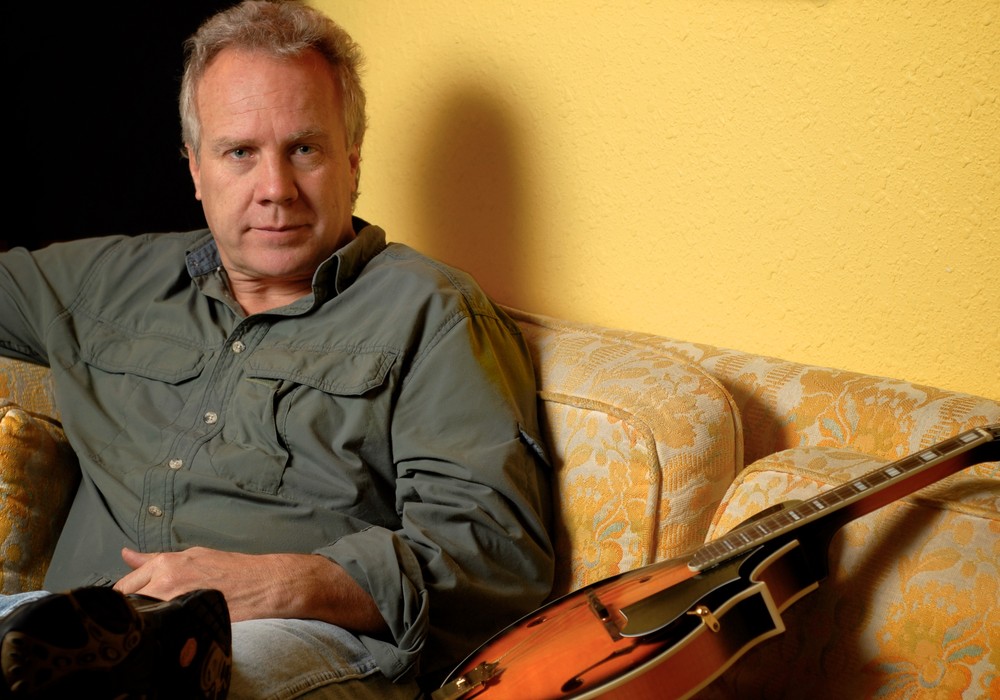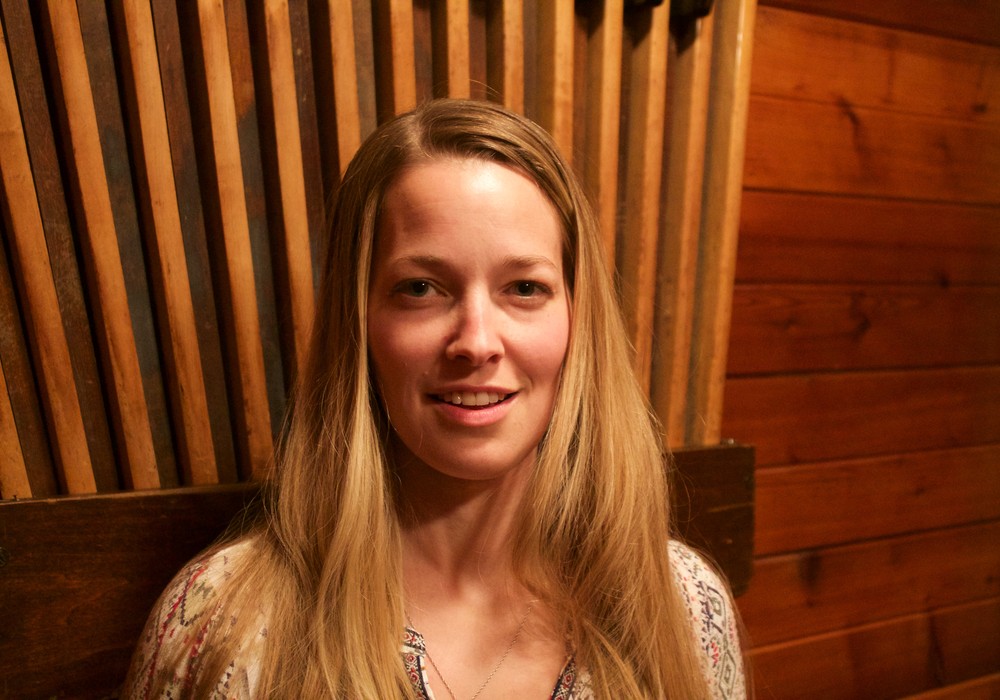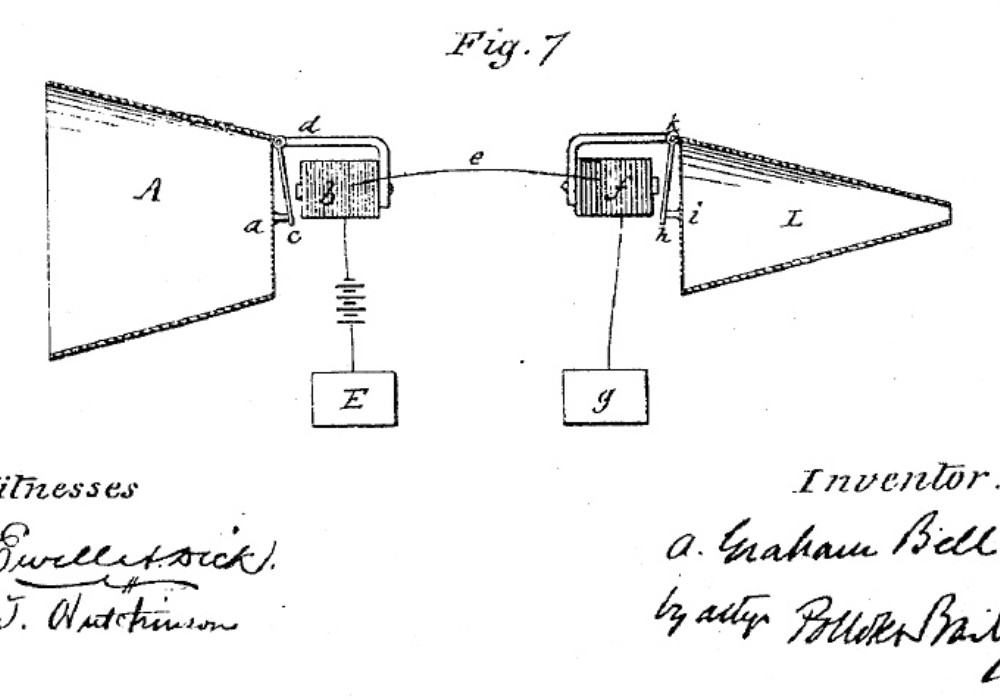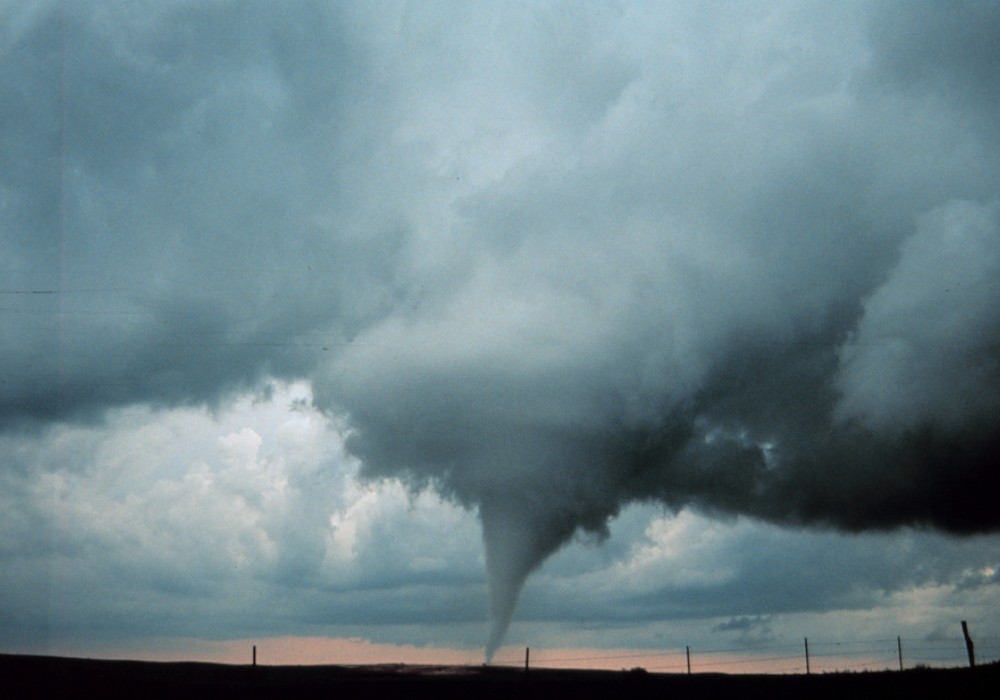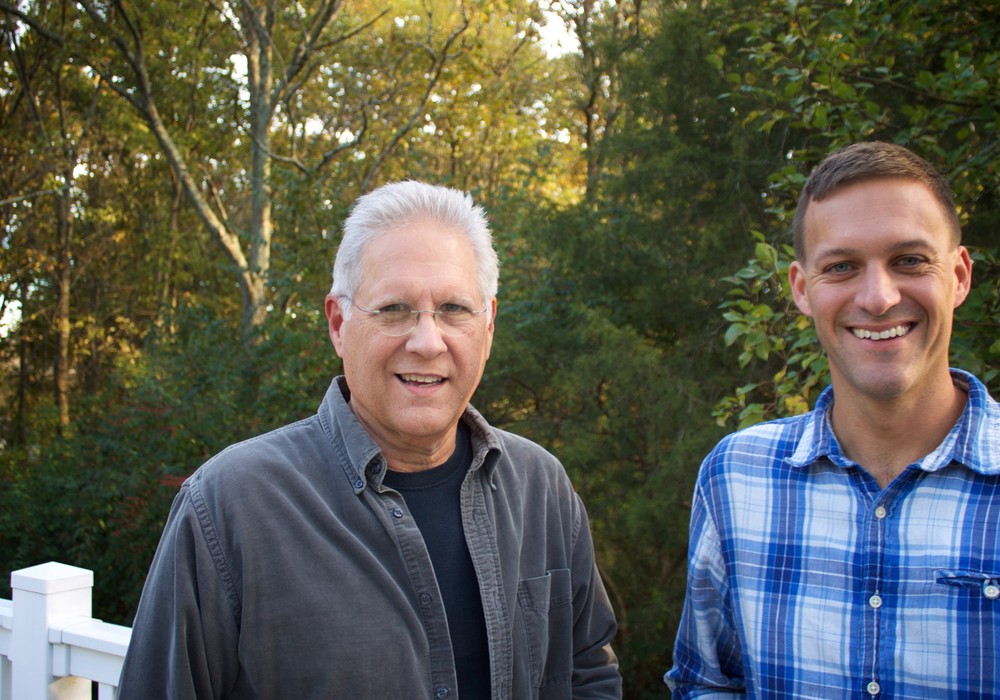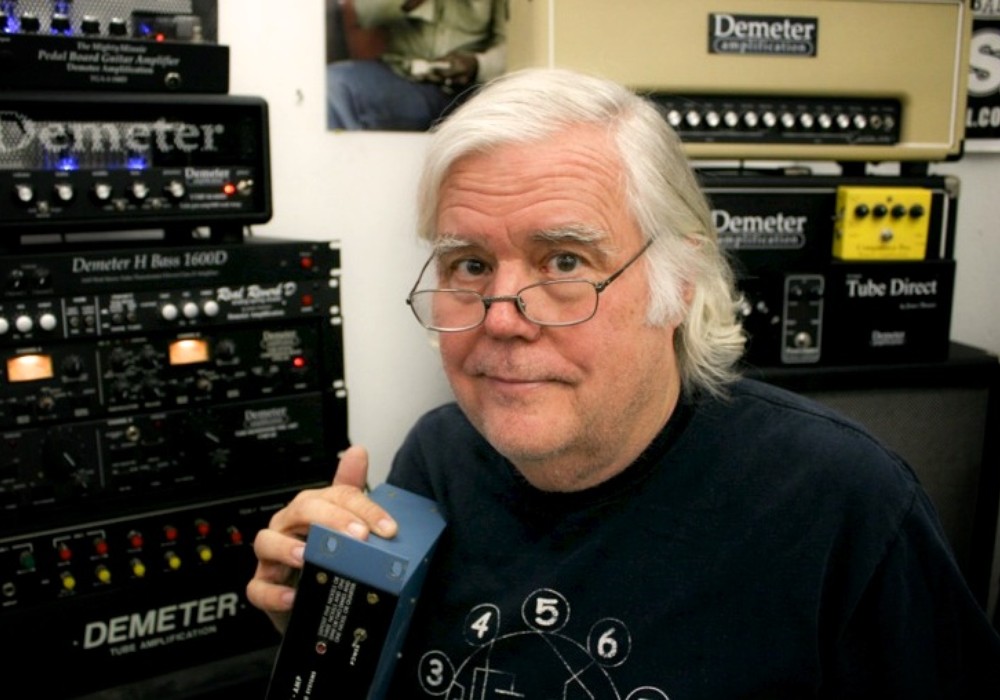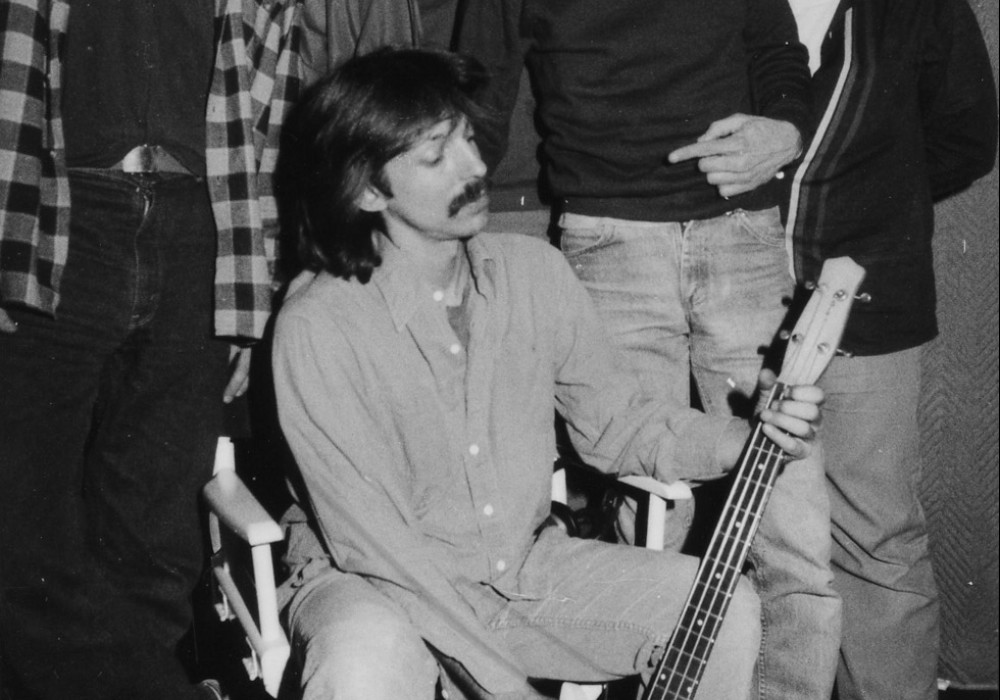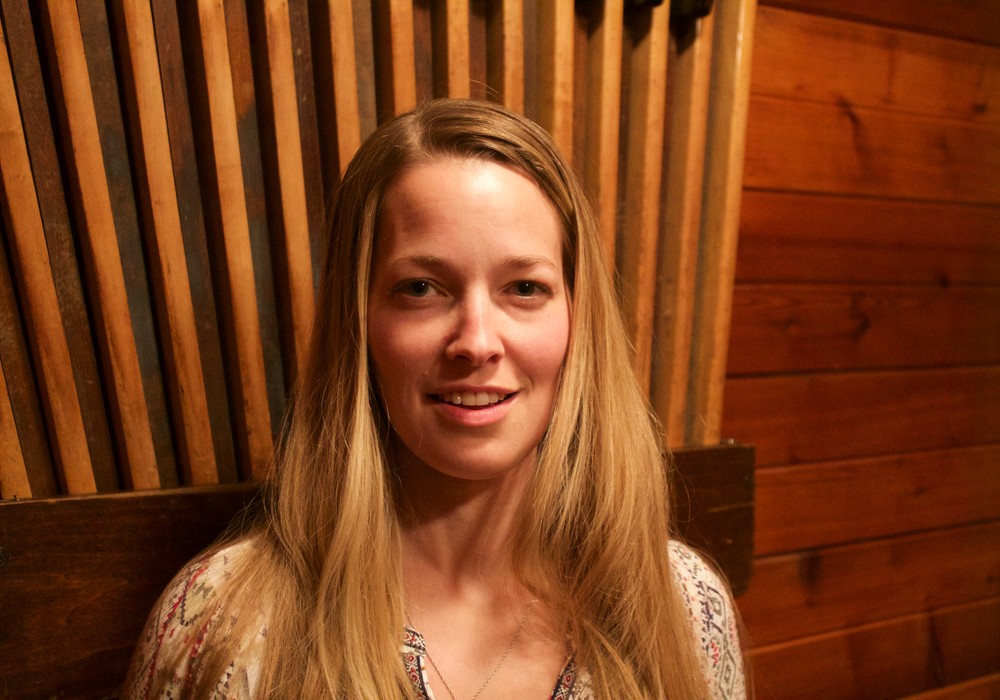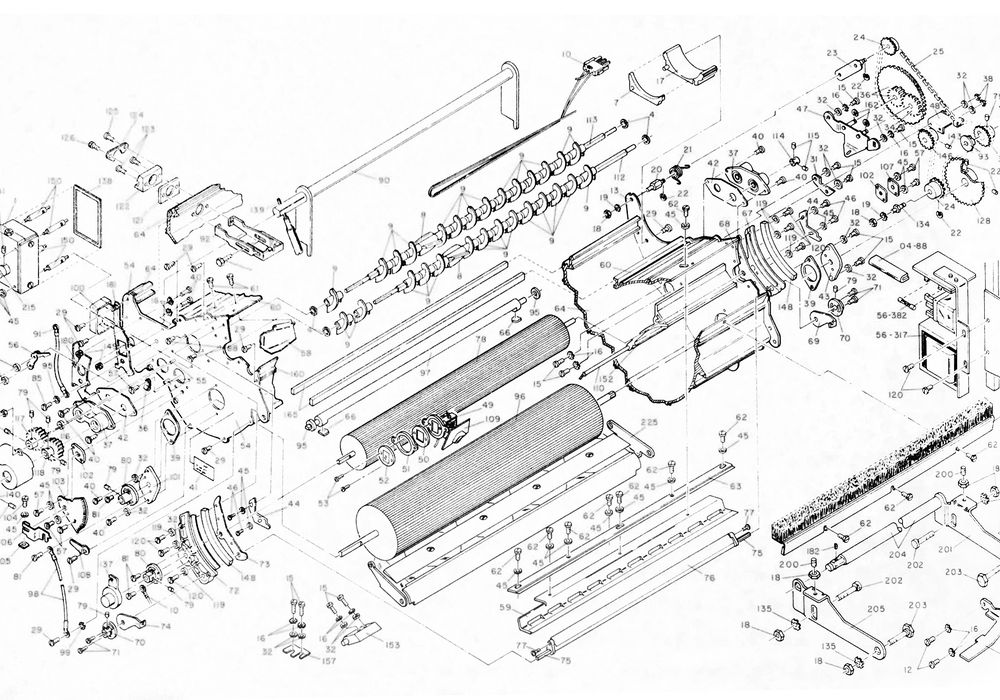Jul/Aug 2015
Welcome to issue #108 of Tape Op.
As I was putting this issue together I was also moving into a new office. I feel lucky to finally have enough room to set up a shelf specifically for archive materials, such as magazine back issues, records by my old bands, and lots of hard drives. Yeah, hard drives. Some contain data from old issues of this magazine and others have backups of my own music, but a majority of these drives contain Pro Tools sessions from various projects I've recorded and produced over the last six or seven years. Unlike many recordists, I've been recording digitally for only a little over a decade. When I began using Pro Tools, I assumed that the artists I worked with understood the importance of backing up their data. I would usually keep copies of a session for a year, or until I saw a CD or LP released. It wasn't until a client (who had lost all their data a year after a one- day session) threatened to make me re-record them for free that I began keeping backups (on RAID or multiple drives) of every one of my sessions. Now I have a stack of hard drives in my office. I would have never kept analog tape copies of all my work back in the day. Imagine the expense and the space needed! But now the questions arise: How long do I need to hang onto this data? What do clients expect of me? Where do I store all these drives? The digital age has changed our workflow, our art, and our expectations. But it also has opened up all sorts of confusing new problems to solve.
Like Bob Dylan before me, I've been spending a fair bit of time in Nashville over the past few years. I really like the city's diverse community of musicians, engineers, producers and studios. And, as this issue is going to press, I'll be at the Summer NAMM show in Nashville. Check out the interviews in this issue with Kyle and Jason Lehning and Gary Paczosa for just two examples of the Nashville music community.
